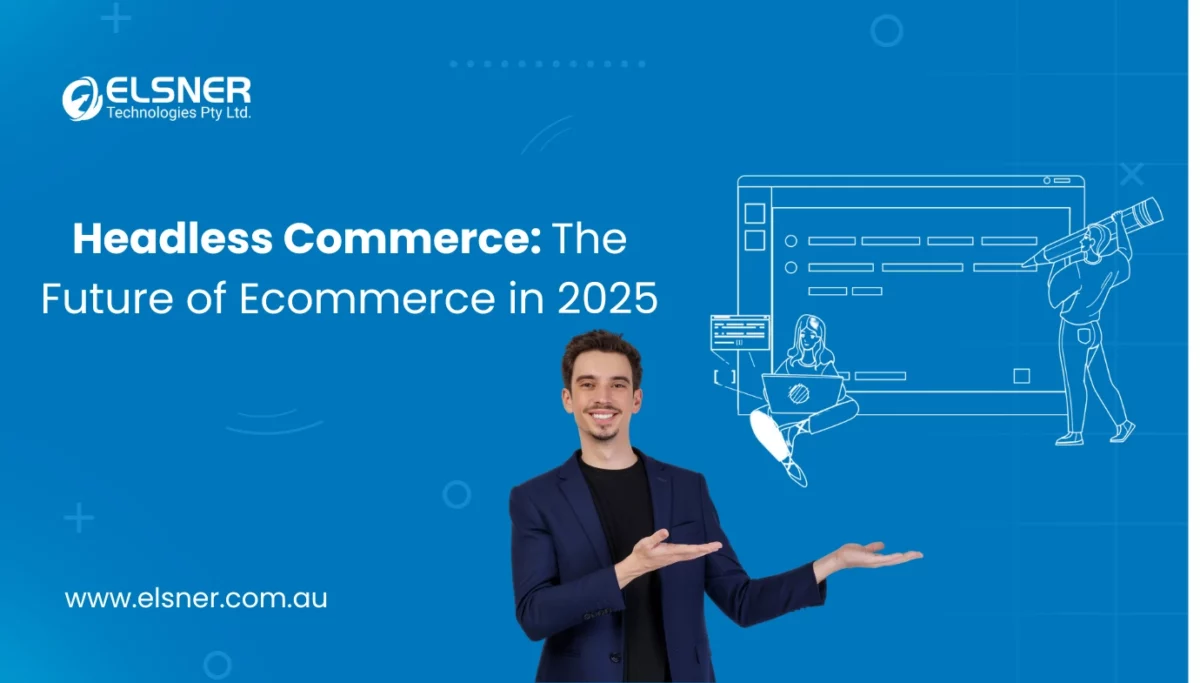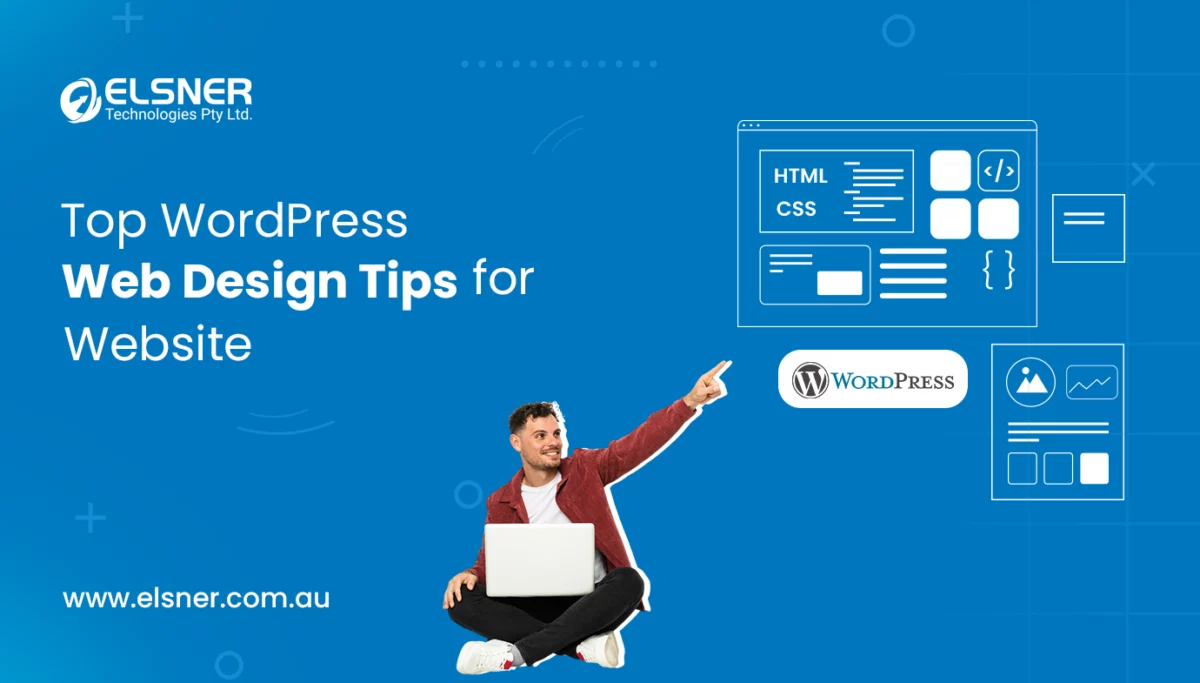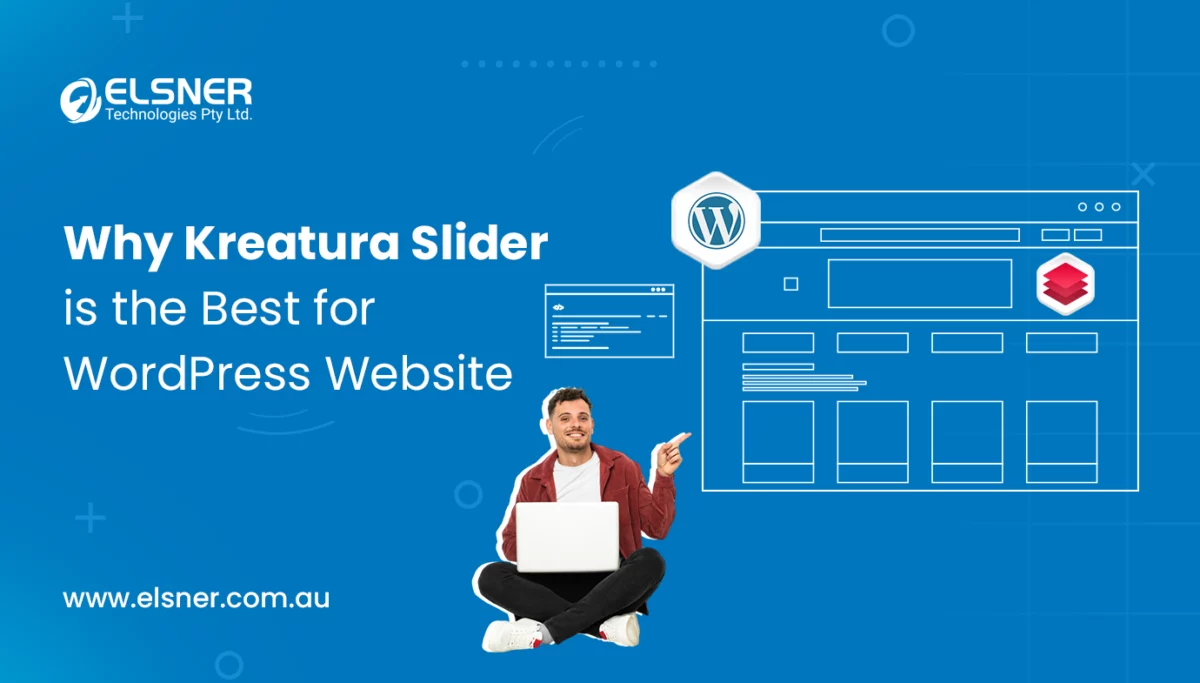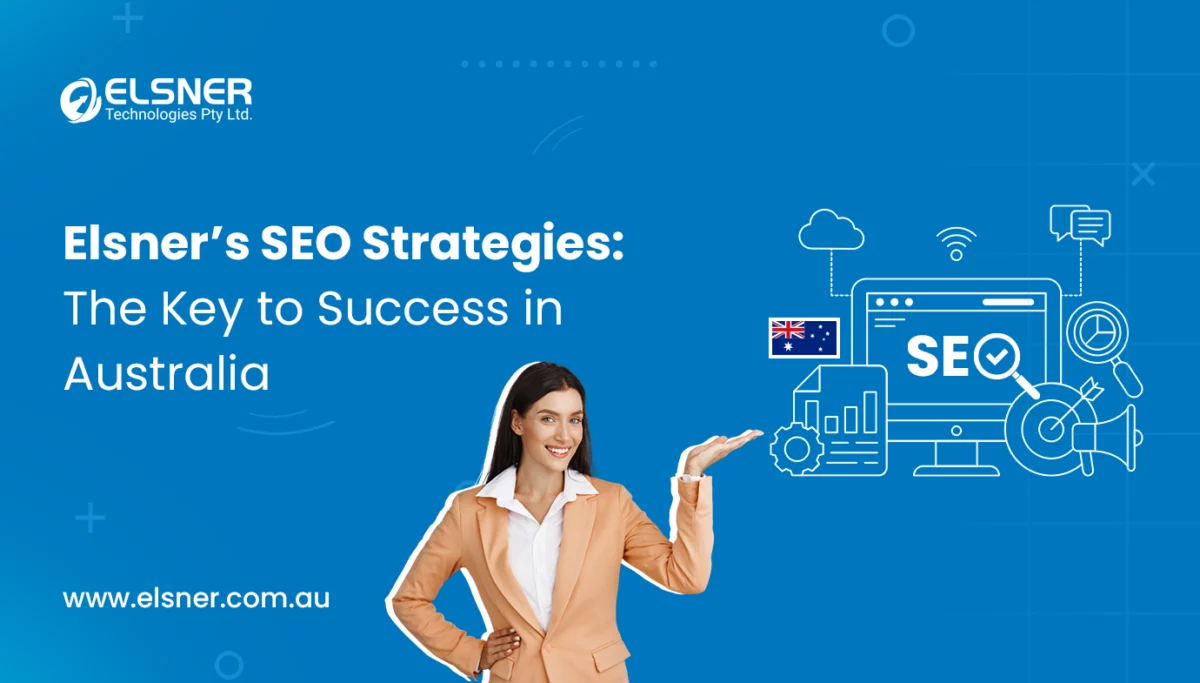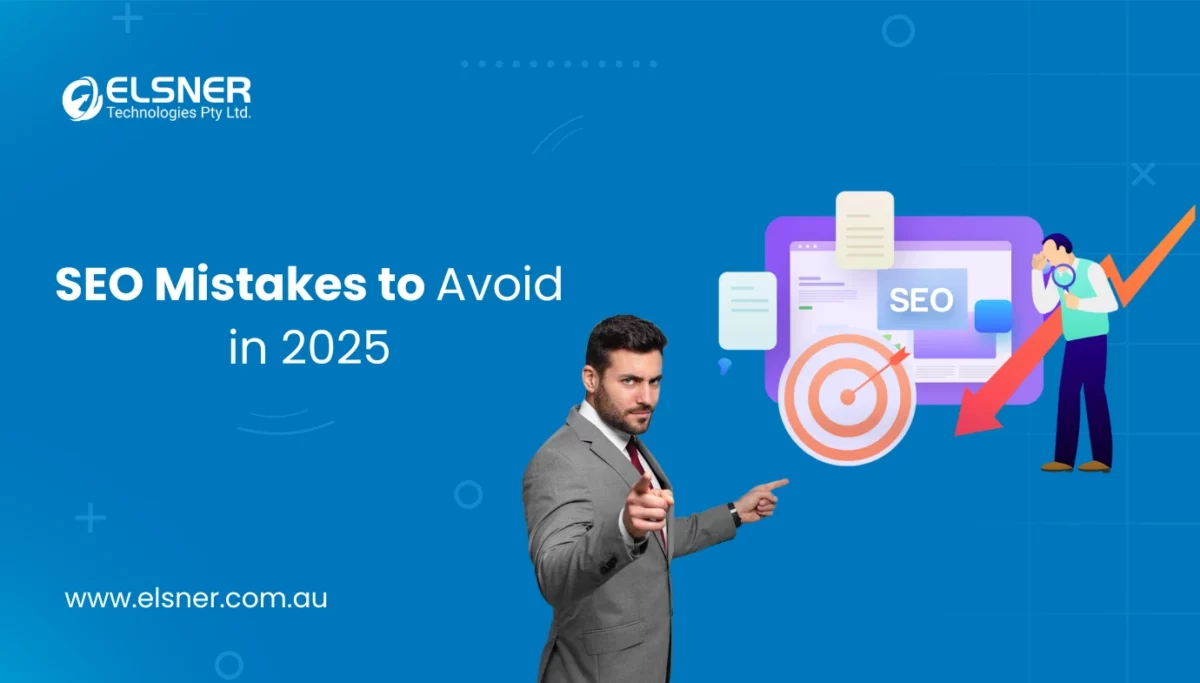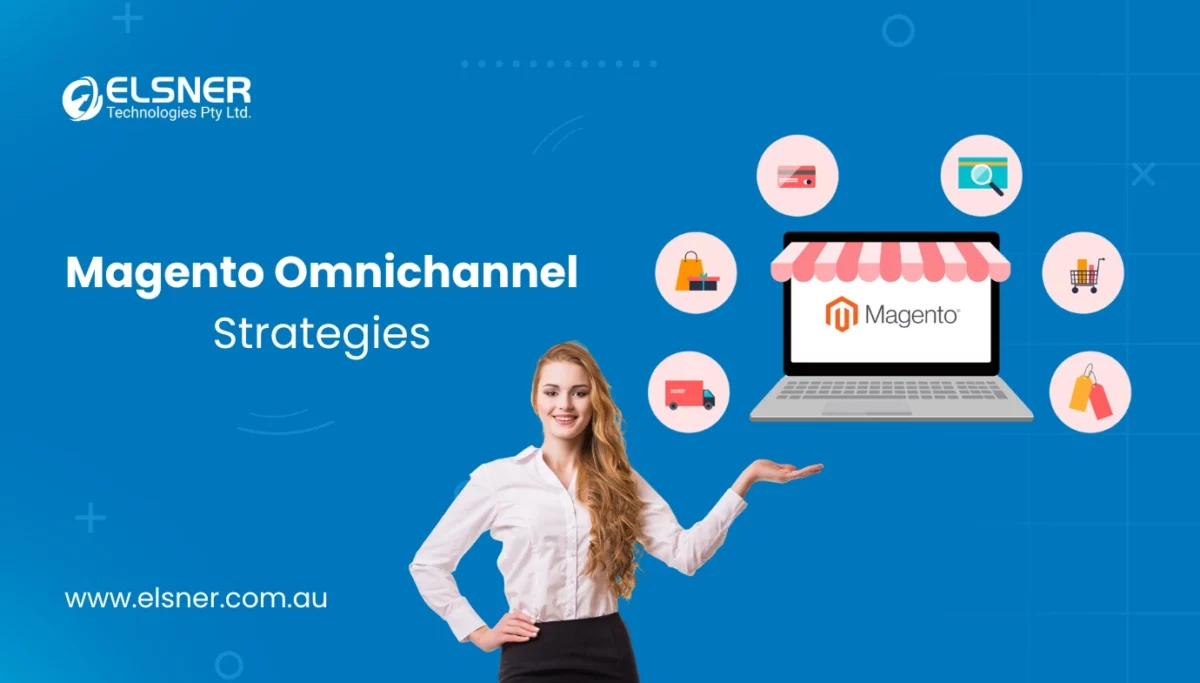Headless Commerce: The Future of Scalable Ecommerce Website Design in 2025
E-CommerceTech advances and fresh e-commerce innovations are shaking things up big time, so much so that the usual ways companies did things five years ago aren’t cutting it now. These days, companies are all about finding quick ways to offer their services with a personal touch, making sure they’re super easy and convenient for shoppers to use on loads of different platforms. Let us introduce you to headless commerce, a revolutionary approach to scalable eCommerce website design that’s redefining the future of online retail.
By 2025, people think headless commerce will be the big boss of e-commerce since it’s got this unmatched thing going on with flexibility, how well it works, and how much it can grow. But what’s the deal with these headless commerce things, and what’s their role in the e-commerce scene, especially in eCommerce website design Sydney? Let’s find out.
What is Headless Commerce?
Headless ecommerce is best described as a modern-day commerce infrastructure with a head and body, where the head and body are the front and the backend, respectively. Unlike traditional ecommerce platforms, which rely on the two having a close functional linkage, headless commerce allows businesses to operate a headless CMS for ecommerce. This means that companies can independently manage their content and product data via APIs from any device or frontend framework.
In other words, it separates the presentation layer (what customers see) from the backend logic (how the website works). This logic permits the API-driven e-commerce platform to formulate specific, rapid shopping solutions that would otherwise be difficult to achieve with traditional platforms.
Why Headless Commerce Is the Future of Ecommerce 2025
These days, the expectations of consumers are rapidly changing, along with technological enhancements, and the e-commerce industry has to keep up. Here is why headless commerce will be a key focus for 2025:
1. Increased Demand for Omnichannel Experiences
Today, many users shop across several touchpoints—webpages, mobile applications, social networks, IoT devices, and even voice assistants! Headless commerce empowers organizations to facilitate quality experiences throughout the customer journey by enabling seamless systems integration.
2. Faster Page Loads and Better Performance of Your Site
Time is money with ecommerce. Studies have shown that even a one-second page load delay could mean a 7% decline in conversion. This means that the design elements ensure instant speed for customers, keeping them engaged and moving them away from abandoning carts.
3. Extended Personalization and Enhanced Customer Experience
Headless commerce enables AI and business machine learning to support personalized customer interactions, facilitating the hyper-personalization of shopping experiences. Advanced analytic tools allow the customisation of marketing messages, product descriptions, and other content to meet the needs of particular shoppers precisely.
4. Better Search Engine Optimization and Mobile Optimization
Search engine optimization must remain a pillar of successful ecommerce, and headless commerce allows you better control over SEO essentials—meta tags, structured data, mobile optimization, whatever so that your site reaches a much higher level in terms of search results. For Australia-based businesses, working with an ecommerce web design company with SEO Services Australia is sure to put you on the upper end in terms of your odds of winning.
5. Future-Ready Ecommerce Sites for the Emerging Technological Frontiers
Ecommerce will ever change with innovations like voice commerce, augmented reality, and the metaverse. That’s how headless ecommerce architecture allows you to easily integrate these new emerging technologies so your business always stays ahead of the competition.
Key Benefits of Headless Commerce
Flexibility & Customisation
With headless commerce, you are paws away from being tied to ultimately rigid templates that traditional platforms possess. You can effortlessly customise the customer-facing part of your store to be in synergy with what defines your unique brand and customer needs.
Improved Performance & Speed
Headless commerce separates the front and backend, minimizing friction caused by unnecessary bloat. Faster load times mean smoother sailing for the customer.
Seamless Integration
Integrating headless commerce with third-party apps and tools becomes easy, pushing your ecommerce ecosystem to be integrated and futuristic.
4. Multichannel Selling
A headless commerce concept involves Ecommerce Webdesign Secrets, designing a web, offering mobile applications, and selling across these platforms to maintain brand consistency.
5. Scaling
When the business grows, the headless commerce scales up. Its modular architecture offers flexibility for rapid enterprise expansion and best suits visionary growth plans.
How Headless Commerce Works: The Technical Breakdown
At the heart of headless commerce is its decoupled architecture. Here’s how it works:
- Frontend (presentation layer): A modern Frontend can be built using various frameworks, including React, Vue.js, or Next.js. This layer handles the interface and user experience.
- Backend (commerce layer): The backend is supported by a headless CMS for e-commerce, which completes tasks such as managing product data, inventory, orders, and payments.
- APIs (the glue): API-driven eCommerce serves as the bridge, joining the front end with the back end, thus allowing real-time data transfer and seamless functionality.
For example, Aerosus has a headless Shopify store that connects to Shopify for commerce but uses its design and user interface. Moreover, Magento PWA merges a top-notch Magento backend with a frontend similar to an app that’s speedy and lightweight, contributing to eCommerce website design success.
Headless Commerce vs. Traditional Ecommerce: What to Choose?
At times, e-commerce platforms like Shopify, WooCommerce, and Magento can fall short due to limited adaptability and growth potential. A quick comparison:
Traditional Ecommerce:
- Pros: Easy setup, integrated/one-stop solution, great for small businesses.
- Cons: Very limited customisation, slower performance, tough scalability.
Headless Commerce:
- Pros: Highly customisable, fast performance, omnichannel approach, future-proof.
- Cons: It requires technical know-how and a high upfront cost.
Which one is better? It depends on the requirements of the business. In case you are a small business with a limited budget, a traditional platform may be more than enough. If you wish to scale quickly and deliver a modern experience, headless commerce is the way to go.
The Top Headless Ecommerce Solutions in 2025
- Headless Shopify: Integrates a powerful backend of Shopify with a customisable frontend.
- Magento PWA: Shows off the magic of progressive web app features of commerce with the balance beam of Magento.
- BigCommerce Headless: A flexible platform for building scalable ecommerce solutions with an API-first mentality.
- Commerce.js & vue storefront: Lightweight, developer-friendly options for headless ecommerce.
- Custom-built solutions: Tailored setups for a headless platform tailored to businesses’ needs.
Business entities in Australia can collaborate with an ecommerce website development Sydney or an ecommerce web design Australia company to pick the right platform for their business, ensuring they leverage the best B2C Ecommerce Development Services for growth and success.
How to Implement Headless Commerce for Your Ecommerce Store?
Moving to a headless setup in the future of eCommerce development might give the personality that it is scary to share, but with the right approach, it would be smooth:
- Assess needs: This involves assessing a business’s goals, the target it aims to achieve, and its technical requirements.
- Catch up with a frontend framework: Use a modern framework of React, Vue.js, or Next.js for the frontend.
- Integrate APIs: Enabling API-driven eCommerce to allow data flow between the front end and back end.
- Test & Opt for Enhancements: Perform performance, security, and usability testing.
For businesses in Australia, working with a reputable ecommerce website design services provider like an ecommerce website design Sydney can streamline the implementation process.
The Future of Headless Commerce Trends from 2025 Onwards
The Future of eCommerce development has abundant opportunities. One can expect:
- AI-driven Personalisation and Automation: AI will significantly enhance personalized shopping experiences and automate backend processes.
- Voice commerce and IoT shopping: IoT and voice-enabled interfaces will see headless commerce as a bridge, enabling seamless shopping experiences across these channels.
- Shopping in the Metaverse and AR/VR: The fusion of AR/VR and metaverse technologies will transform how customers interact with brands.
- 5G & Web 3.0: Faster internet speeds and decentralized technology would further enhance e-commerce scalability & performance.
Final Thoughts
Headless commerce isn’t just another buzzword; it is part of the future of scalable eCommerce site development. Going forward, by 2025, businesses adopting headless commerce will be better set to offer outstanding customer experiences and grow quickly while staying ahead of the competition. To truly capitalize on this shift, businesses should also focus on Ecommerce SEO Maximize Traffic & Sales, ensuring their headless commerce strategy drives visibility and conversions. Now is the time to explore the possibilities of headless commerce—whether you run a small business or a large corporation.
In Australia, you can partner with an ecommerce web design company that offers Website Design Services Australia to help you transition smoothly to headless commerce in time. Don’t hesitate! Future-proof your ecommerce business today; stay ahead in the ever-changing world of online retail.
FAQs
1. What is headless commerce?
Headless commerce offers an e-commerce structure that detaches the user interface from the commerce engine. This allows for more tailor-made adjustments and adaptability.
2. How is it different from traditional e-commerce?
The traditional e-commerce platform was tightly integrated front to back, while headless commerce was decoupled from traditional e-commerce systems, enabling flexibility, fast performance, and omnichannel selling.
3. What are the key benefits of headless commerce?
Key benefits include flexibility, faster performance, seamless integrations, omnichannel selling, and performance optimisation.
4. Which platforms support headless commerce?
Popular platforms include Headless Shopify, Magento PWA, BigCommerce Headless Commerce.js, and Vue Storefront.
5. How do I switch to headless?
An experienced SEO Services Australia will ease your work by analyzing your needs and constraints, choosing the appropriate platform, selecting a frontend framework, integrating the APIs, and testing the fully integrated solution.
